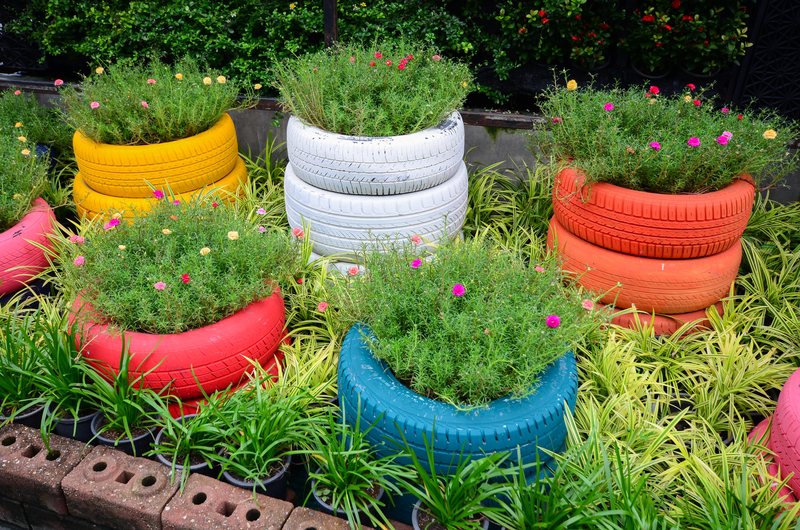Rethinking Pollution: Stopping Microplastics
As the world increasingly grapples with environmental degradation, the problem of microplastic pollution has emerged as a significant concern. These tiny plastic fragments, often invisible to the naked eye, are not only pervasive but also pose a severe threat to our ecosystems and human health. It's time to rethink our approach to pollution and make concerted efforts towards stopping microplastics for good.
Understanding Microplastics
Microplastics are defined as plastic particles smaller than 5mm in diameter. They originate from two primary sources:
- Primary microplastics: These are intentionally manufactured tiny plastic particles used in products like cosmetics and industrial applications.
- Secondary microplastics: These occur when larger plastic debris breaks down due to environmental factors such as sunlight exposure, wave action, and other physical forces.
Microplastics can be found in every corner of our planet, from the deepest ocean trenches to the highest mountain peaks. Their ubiquity makes them a formidable challenge to environmental protection efforts.
The Sources of Microplastic Pollution
To effectively combat microplastic pollution, understanding their sources is crucial. Key contributors include:
- Textile fibers released from washing synthetic clothing.
- Tire wear particles generated by vehicles.
- Marine paint flakes from ships and boats.
- Single-use plastics that degrade over time.
- Cosmetic products containing microbeads.
These sources underscore the diverse nature of microplastic pollution, requiring a multifaceted approach to address effectively.
The Impact of Microplastics on the Environment and Health
Microplastics have far-reaching effects on ecosystems and living organisms:
- Marine Life: Marine organisms can ingest microplastics, which can lead to malnutrition and physical harm.
- Food Chain Contamination: Microplastics can enter the food chain, ultimately affecting human health through seafood consumption.
- **Chemical Hazards**: Microplastics can act as carriers for harmful chemicals, increasing their toxicity.
- Environmental Persistence: Microplastics are resistant to degradation, leading to long-term environmental presence.
The impact of these fragments is not limited to the ecosystem; emerging studies suggest they may have adverse effects on human health, potentially leading to inflammation, cellular damage, and disrupted hormonal balances.
Strategies for Stopping Microplastics
Stopping microplastics requires a comprehensive, global effort that entails:
Policy and Legislation
Governments play a pivotal role in combatting microplastic pollution through:
- Banning microbeads: Several countries have already implemented bans on microbeads in cosmetics and personal care products.
- Implementing strict regulations on plastic emissions from industries.
- Encouraging corporate responsibility to minimize plastic usage and improve waste management.
Technological Innovations
Encouraging innovation can lead to technological breakthroughs that help reduce microplastic pollution:
- Developing alternative materials that are biodegradable and eco-friendly.
- Innovative waste management solutions to capture microplastics at their source.
- Create effective filtration systems for washing machines to capture synthetic fibers.
Education and Public Awareness
Raising awareness among consumers about the sources and impacts of microplastics is crucial. An informed public can make environmentally conscious decisions that reduce plastic use and support sustainable practices:
- Encouraging the use of natural fibers in clothing, rather than synthetic alternatives.
- Advocating for reduced single-use plastic consumption.
- Promoting participation in clean-up initiatives aimed at reducing terrestrial and marine litter.
The Role of Individuals in Stopping Microplastics
Every individual can contribute to reducing microplastic pollution through personal choices:
- Opt for reusable alternatives to single-use plastics.
- Advocate for policies and participate in community efforts.
- Inform friends and family about the impacts of microplastics.
By being conscientious consumers, we can significantly reduce our microplastic footprint.
Conclusion: Rethinking the Future of Pollution Control
Tackling the issue of microplastic pollution requires a paradigm shift in how we view and manage plastic materials. It demands collaboration among governments, industries, and the public to implement effective strategies and foster innovations in reducing plastic dependency. By working together, we can move towards a future where plastic pollution, particularly microplastic contamination, is substantially mitigated.
Stopping microplastics is integral to safeguarding our planet for future generations. Let us rethink our relationship with pollution and commit to sustainable practices to ensure a healthy and clean environment for all.

